Http Www.healthyandnaturalworld.com Best-air-filtering-house-plants
All air purifying plants can improve our health in many means, arresting harmful carbon dioxide and releasing oxygen into the air through a process known equally photosynthesis, as well equally helping to balance humidity levels, which is besides beneficial to our wellbeing.
An often-cited 1989 written report by NASA also found that some houseplants could reduce levels of air-borne toxins such as Volatile Organic Compounds (VOCs), which include a range of harmful chemical gases emitted from effects, detergents, and paints. However, more recent research has shown that fifty-fifty the best indoor plants absorb such low levels of toxins that you would need a forest of them to purify the air effectively, while simply opening a window for couple of days after buying new carpets and furniture to allow any harmful VOCs to escape would be a more effective solution.
While inquiry is on-going, these are the best air purifying plants which have been institute in some experiments to reduce airborne pathogens and air pollutants.
Amend the ambience of your home with air purifying plants
Air purifying indoor plants tin help to improve your mental wellness and heave amnesty levels while adding natural ornamentation to your domicile, so you take nil to lose even if their air purifying abilities are not every bit stiff as previous studies, such as the NASA study, might have suggested.
1. Weeping Fig (Ficus benjamina)
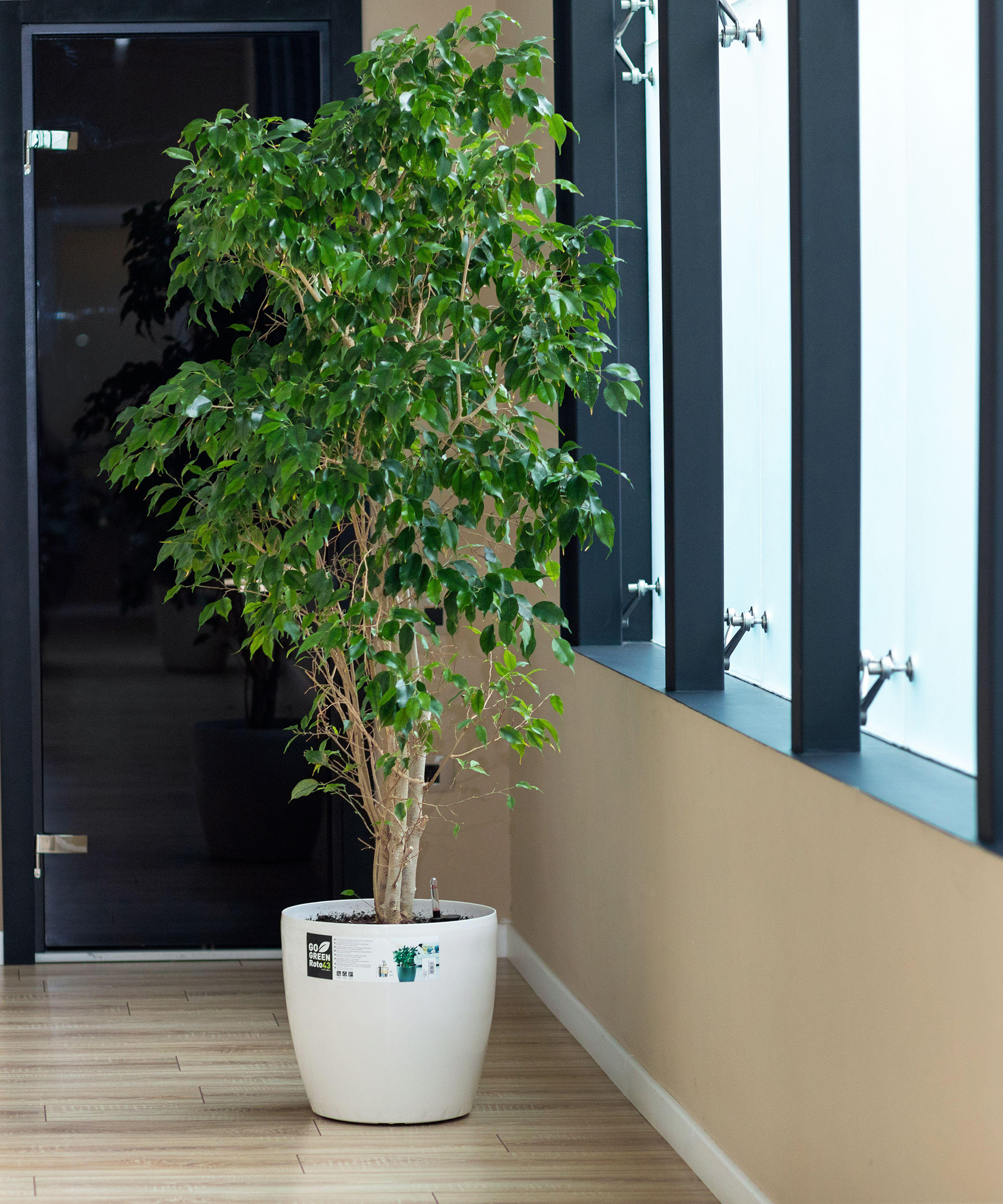
(Image credit: Farhad Ibrahimzade / Alamy Stock Photo)
This elegant houseplant has been shown to regulate levels of bacteria and molds in the air and to absorb small quantities of VOCs and other harmful gases. Although quite demanding, when happy a weeping fig will reward yous with graceful arched stems of small green leaves, or effort the beautiful 'Variegata', with its cream-splashed foliage, for a more colorful effect.
These tall air purifying plants constitute tin can attain over 5ft (i.5m) in height and require space to grow in a typhoon-free indoor garden that offers filtered dominicus or light shade.
Water with tepid rainwater or distilled h2o and feed with a half-forcefulness balanced liquid fertilizer once a calendar month from jump to fall. Mist the leaves in summer and practise non motion or repot it, as this can consequence in leaf drop.
2. Peace lily (Spathiphyllum wallisii)

Peace lily (Spathiphyllum wallisii)
(Paradigm credit: D. Hurst / Alamy Stock Photograph)
Deservedly popular, the peace lily may help to keep bacteria and mold spores at bay and it has been shown to absorb pocket-sized quantities of benzene, a harmful VOC used in many industries and found in car exhaust fumes. Which is why this makes our list of air purifying plants.
An platonic plant for beginners, this compact plant produces sleeky nighttime green leaves and long-lasting white tear-shaped flowerheads, which emerge in jump. Ready your plant in filtered sun or low-cal shade, and keep the compost moist from spring to fall; water only when the top of the compost feels dry in winter.
It will recover from short periods of neglect – the leaves will droop when it's thirsty. Mist the foliage every week or two in summertime, and employ a counterbalanced liquid fertilizer once a fortnight from early bound to late autumn.
iii. Areca palm (Dypsis lutescens)
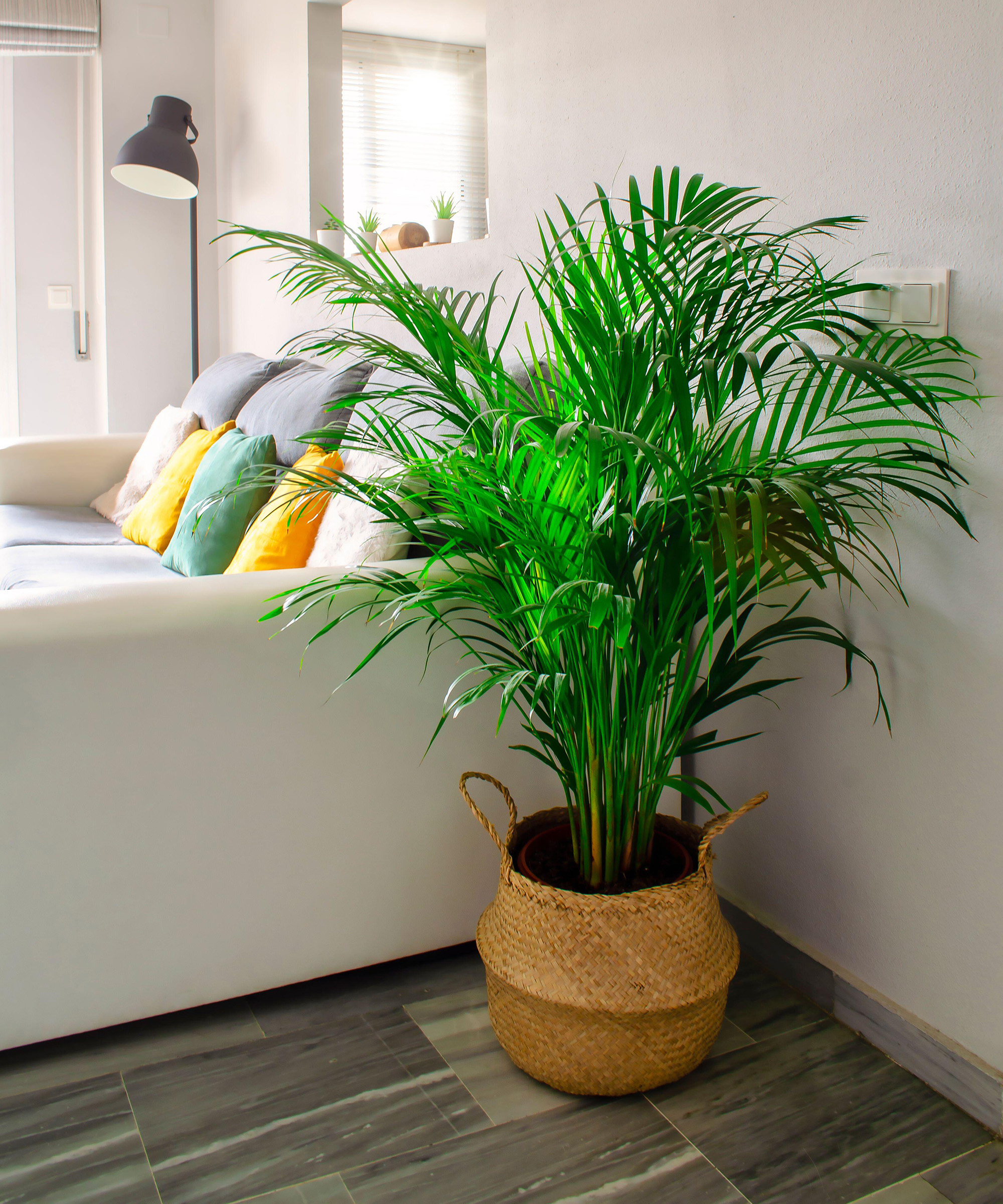
(Paradigm credit: Mlle Sonyah / Alamy Stock Photo)
The areca palm is thought to reduce levels of airborne bacteria and mold spores and to absorb minor quantities of VOCs. Also known as the butterfly palm considering its fronds are said to resemble these beautiful insects, this alpine plant requires infinite to develop its wide, arching leaves. But if you lot take a suitable room, it'south a low maintenance indoor plant which is very easy to intendance for.
Set it in filtered sun and keep it away from radiators in winter. H2o when the top of the compost feels dry, reducing irrigation even farther in wintertime when the plant is dormant. Mist the fronds regularly from spring to fall, and apply a balanced liquid fertilizer about two or three times during the same menstruation.
iv. Dragon plant (Dracaena fragrans)
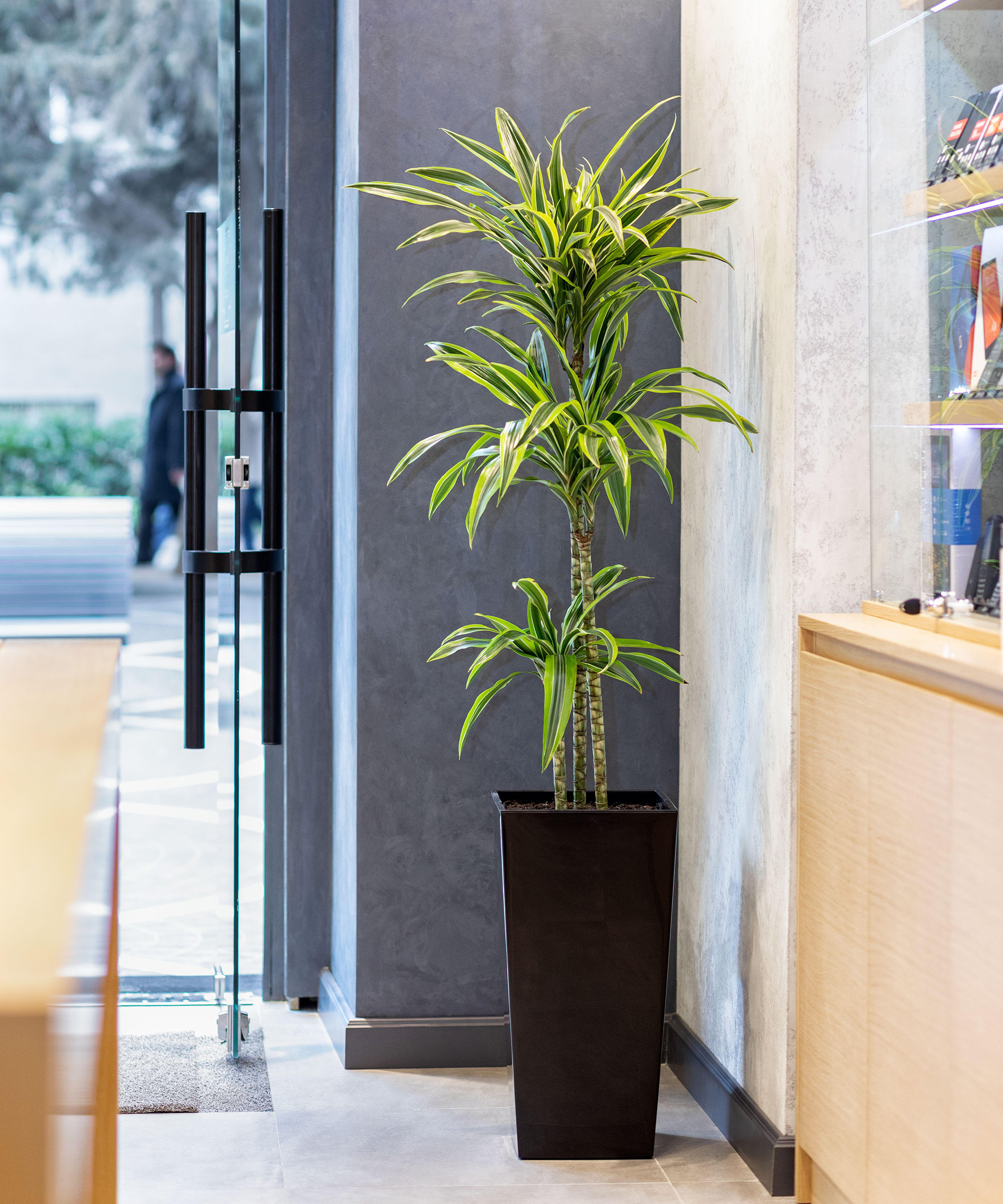
(Image credit: Farhad Ibrahimzade / Alamy Stock Photo)
A perfect plant for beginners, the dragon plant strikes a pose with its spiky variegated leaf, while recent inquiry shows that they're the best air purifying plants for arresting acetone, constitute in nail varnish products. They're besides idea to aid reduce molds and leaner from the air.
Tolerant of a wide range of light levels, except straight sunday, this could brand a good low light indoor plant. Use information technology to dress upward a gloomy corner in a living room or chamber.
Proceed the compost moist from spring to fall, watering more sparingly in winter, and mist the foliage occasionally. Feed with a one-half-strength balanced liquid fertilizer every two weeks from spring to early fall.
5. Bamboo palm (Rhapsis excelsa)

Bamboo palm (Rhapsis excelsa)
(Prototype credit: R Ann Kautzky / Alamy Stock Photo)
One of the easiest palms to grow in your home, this large decorative plant may likewise help to lower levels of pathagons such as bacteria and molds in the air.
Edgeless-ended, ribbed fronds abound from tall bamboo-similar stems, which can accomplish up to 6ft (2m) or more than in top. Non an choice for small homes, this big dazzler needs plenty of space to smooth, but it will tolerate low light conditions.
Keep the compost moist from leap to fall, then reduce watering in winter, applying it simply when the surface feels dry. Mist the leaves regularly in summertime, and feed with a balanced liquid fertilizer about two or 3 times from leap to fall.
6. Dumb cane 'Camille' (Dieffenbachia 'Camille')
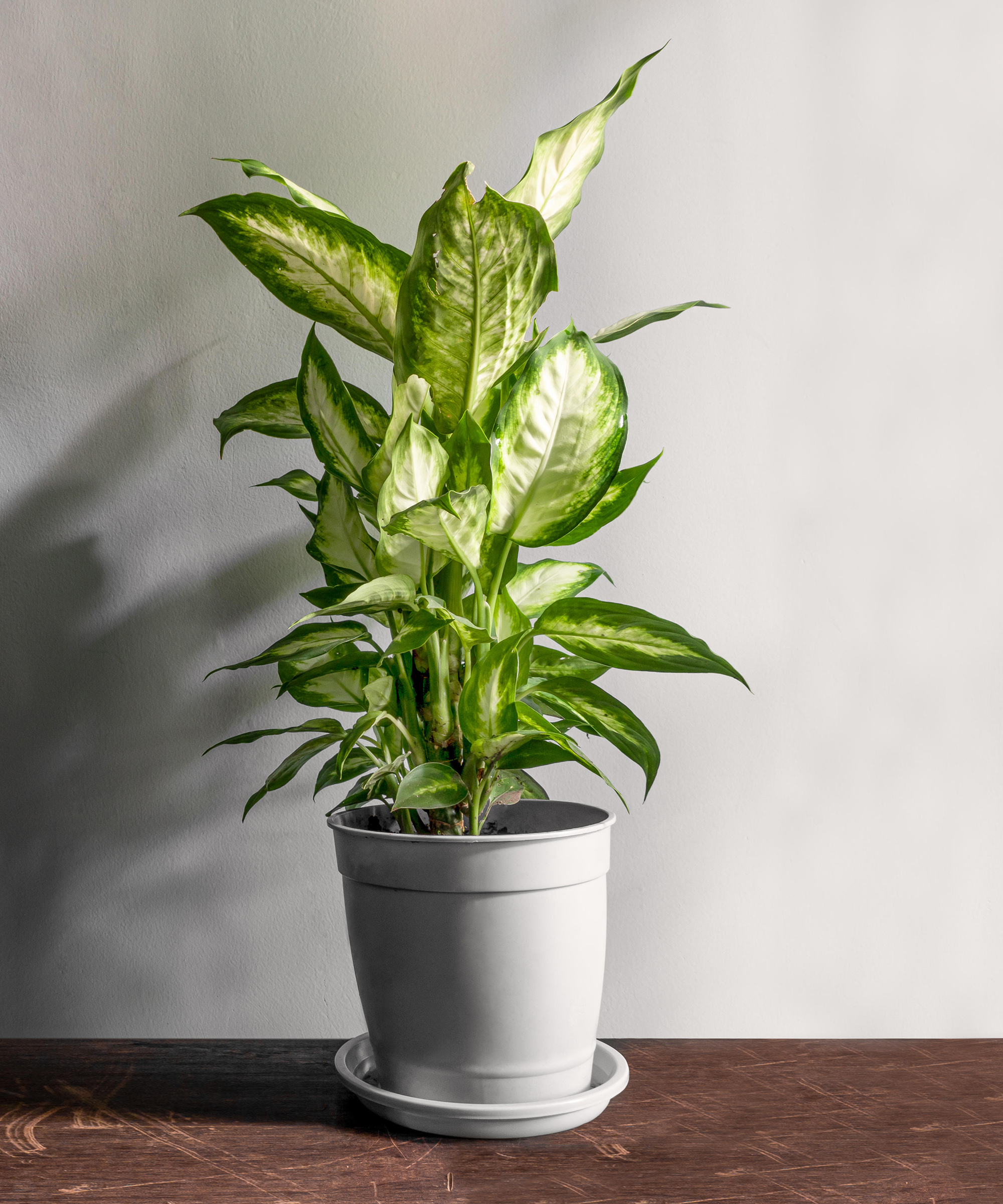
Impaired cane 'Camille' (Dieffenbachia 'Camille')
(Image credit: ANTHONY NILBER MORAES BARROS PAZ / Alamy Stock Photo)
Prized for its striking duo-tone leaves, the dumb cane earns its credentials as one of the best air purifying indoor plants because it may help to absorb toxic gases given off by some paints when newly practical. And it's believed to also reduce mold spores and airborne bacteria.
Platonic for a tabletop when young, mature plants tin can reach up 5ft (1.5m) in height and are more suited to a large pot on the floor.
Set it in filtered sun or light shade for the best leaf color, and keep the compost moist, reducing watering in wintertime when the soil should be kept almost dry. Mist the leaves occasionally and utilize a counterbalanced liquid fertilizer once a month from spring to fall.
7. Spade-foliage philodendron (Philodendron domesticum)

Spade-foliage philodendron (Philodendron domesticum)
(Paradigm credit: Olivia Birsan / 500px)
With big, slim heart-shaped leaves, this easy institute will help to reduce fungal spores and airborne bacteria, while besides slightly reducing levels of formaldehyde, which is used in some glues, plywood and fibreboard.
If you lot're looking for a found for bedrooms with limited natural low-cal, this one will be happy in that sort of infinite. The flexible stems can also be used to scramble upward a mossy pole or along wires fixed to a wall.
Keep the compost moist soil from spring to autumn but don't worry if you forget now and again, equally information technology will tolerate periods of drought. Reduce watering in winter, allowing the elevation to dry out between applications. Add a balanced liquid fertilizer once a calendar month from jump to fall.
8. Devil'south ivy (Epipremnum aureum)
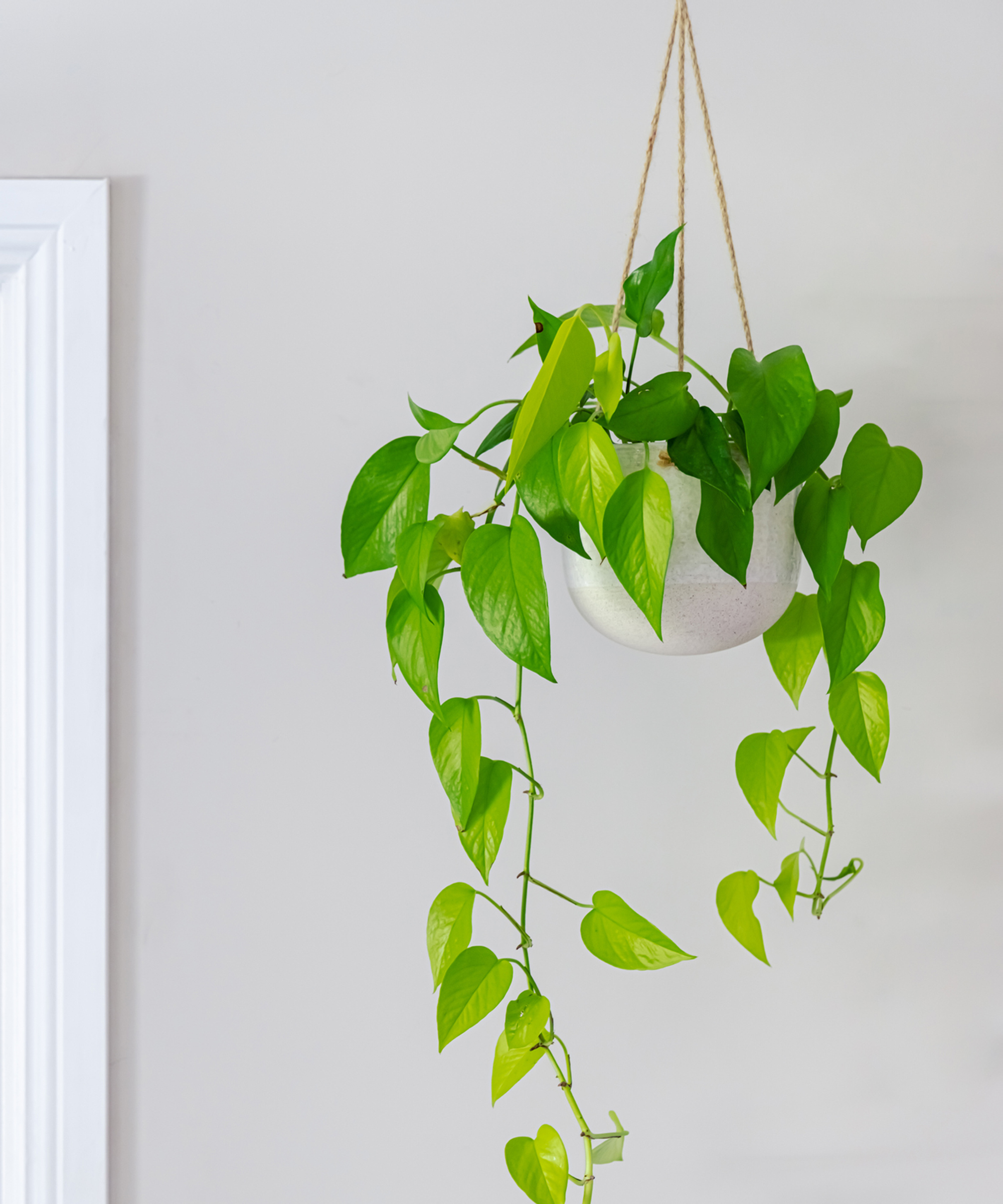
Devil'south ivy (Epipremnum aureum)
(Image credit: Brendan Maher / Getty)
Beginners will honey this easy-to-grow houseplant, which enquiry shows helps to slightly reduce levels of benzene, also as mold spores and airborne bacteria.
The devil's ivy, or pothos as it'south likewise known, is tolerant of near all calorie-free levels, bar direct lord's day. The flexible stems of heart-shaped leaves brand this one of the all-time indoor hanging plants to trail from a hanging basket or climb up a mossy pole or along wires stock-still to a wall.
Allow the top of the compost to dry out out between waterings and continue the soil about dry over wintertime. Utilize a balanced liquid fertilizer in one case a month from spring to fall.

Goosefoot establish (Syngonium podophyllum)
(Image credit: Firn / Alamy Stock Photo)
The goosefoot institute, or arrowhead vine, is a leafy trailing or climbing houseplant that has been shown to reduce airborne fungal spores and bacteria and absorb small quantities of VOCs.
Its elegant heart-shaped leaves are green with white markings and make a dramatic statement when abaft from a large hanging basket or climbing upward a mossy pole – it may grow more than upright when young but the stems soon start to wander.
Piece of cake to grow, it will be happy in most rooms only prefers a position in filtered sun or light shade. Water when the top of the compost feels dry and reduce watering even further in winter. Mist the foliage regularly in summer, and feed with a one-half-strength balanced liquid fertilizer every fortnight from spring to fall.
10. Ophidian plant (Sansevieria trifasciata 'Laurentii')
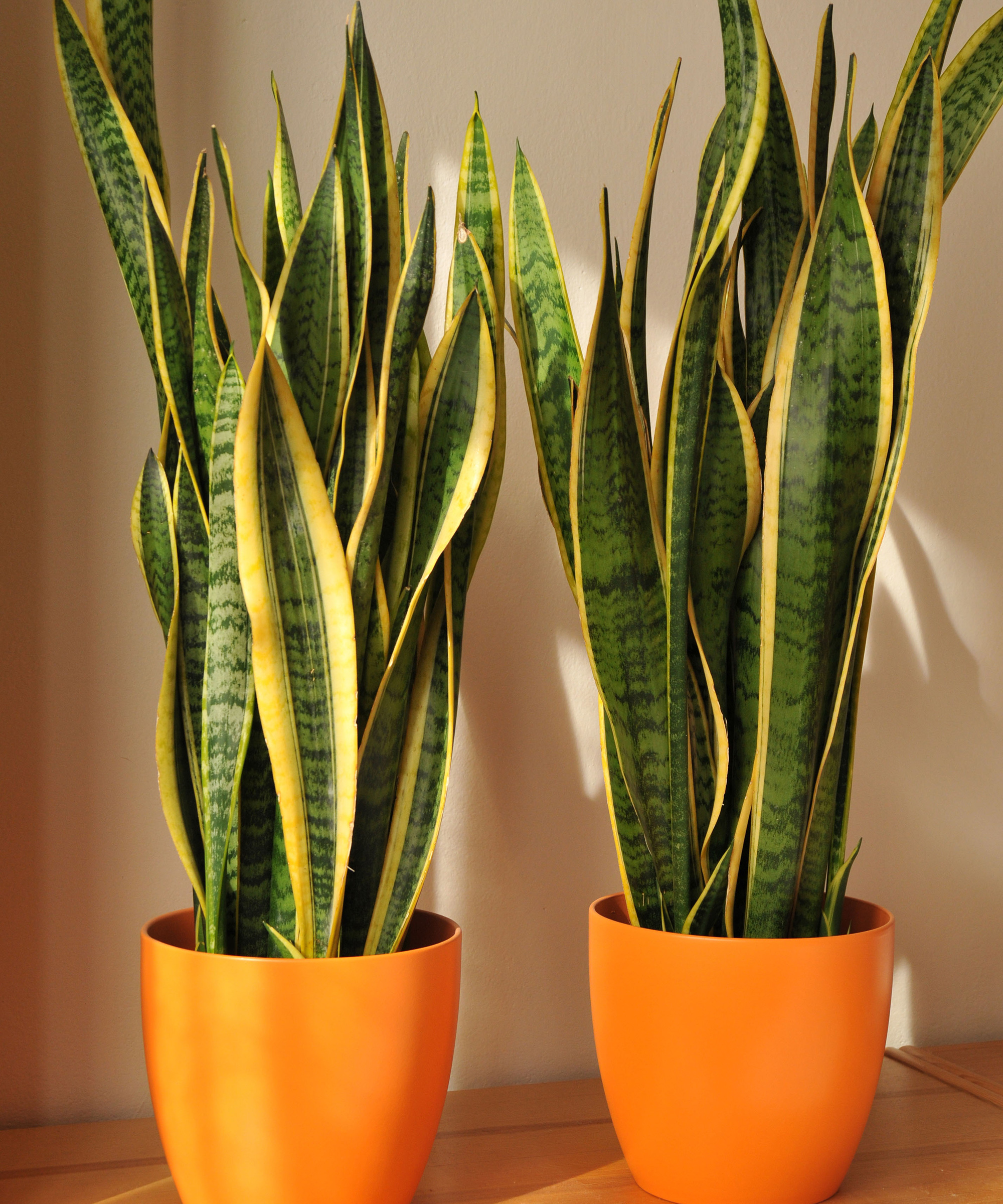
(Prototype credit: Profimedia.CZ a.s. / Alamy Stock Photo)
Also known as mother-in-law's tongue, the ophidian institute is one of the easiest to grow, and volition help to reduce airborne mold and bacteria in your dwelling house, as well as slightly lowering levels of VOCs. It produces clusters of compact, sword-like variegated leaves, making it ideal for pocket-sized rooms, and while it prefers lite shade, it will also tolerate lower lite levels.
Ophidian plants are easy to look later on as these air purifying indoor plants thrive on neglect and overwatering is ane of the few ways yous can kill them, so permit the acme of the compost to dry out between waterings and reduce wet levels even further in winter, and then that the soil is most dry. Apply a half-strength liquid fertilizer once a month from spring to fall.
eleven. Croton (Codiaeum variegatum)
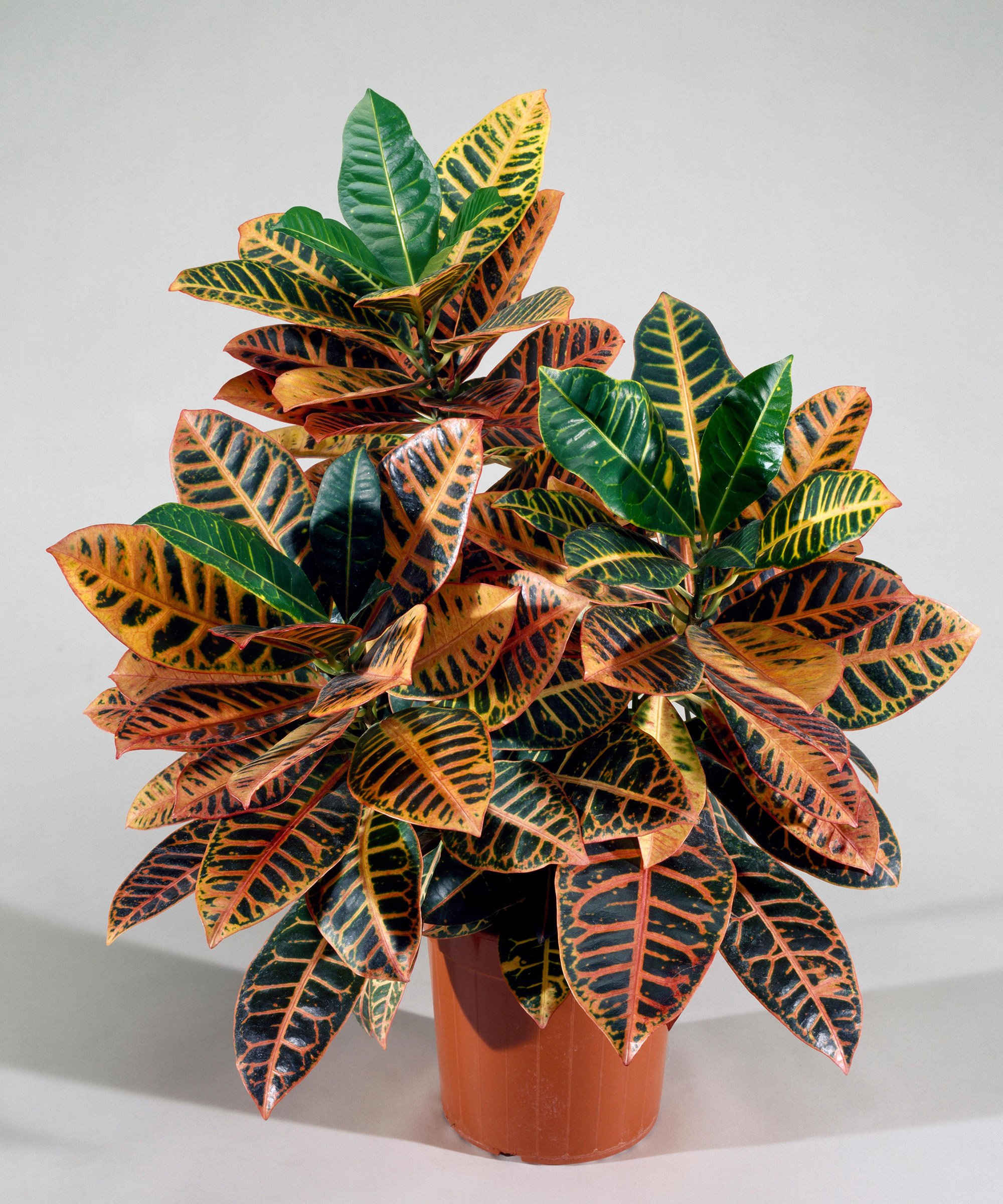
Croton (Codiaeum variegatum)
(Epitome credit: Universal Images Group Due north America LLC / DeAgostini / Alamy Stock Photo)
Ideal for brightening upwardly a room with its multi-colored lobed leaves, research shows that the croton found helps to reduce levels of mold and bacteria in the air. A true prima donna, this beauty is very enervating and all-time for more experienced firm found owners.
One of the best plants for bathrooms, a heated bathroom in detail would suit its requirements for high levels of humidity and constant warmth, away from drafts. Utilise tepid water to continue the compost moist from bound to fall and allow the top to dry out out in winter.
Set it on a tray of damp pebbles to raise ambient humidity levels, but exercise not mist the leaves, and apply a balanced liquid fertilizer every fortnight from spring to autumn.
12. Blushing bromeliad (Neoregelia carolinae)
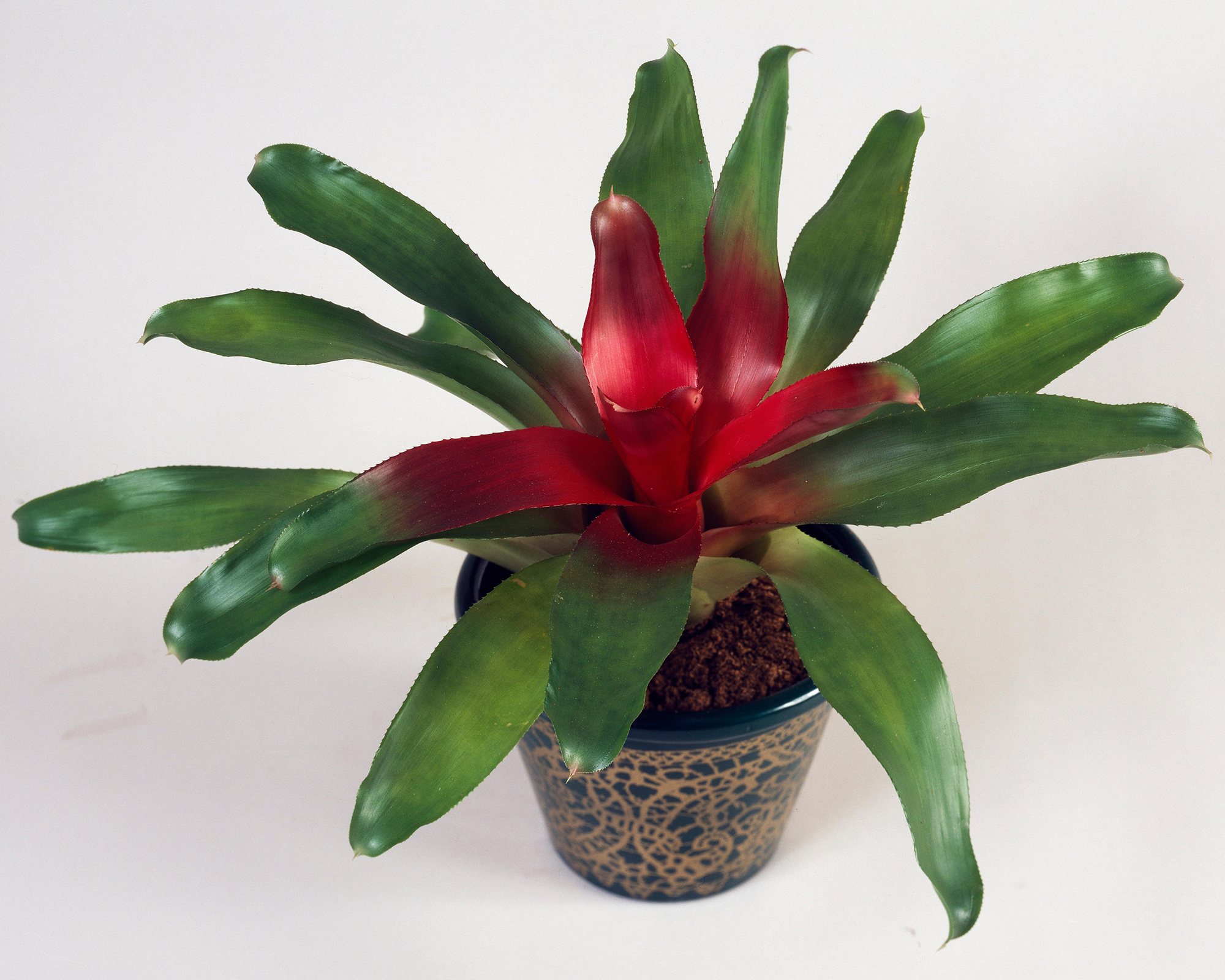
Blushing bromeliad (Neoregelia carolinae)
(Paradigm credit: Universal Images Group Northward America LLC / DeAgostini / Alamy Stock Photo)
Recent research puts bromeliads at the pinnacle of the list of plants that help to remove VOCs from the air, so while one or 2 specimens may not do the same job as an air purifier, these little beauties are certainly worth a space in your dwelling house. The blushing bromeliad is one of the easiest bromeliads to grow, and sports glossy light-green or variegated leaves that are red in the center, and violet flowers surrounded by carmine bracts in summertime.
Like the prayer found, it'due south platonic for a bathroom or kitchen equally bromeliads adopt high humidity levels. Water with tepid distilled or rainwater, allowing the compost to dry between waterings, and also make full the well created by the leaves in the eye of the plant, replenishing the water hither every four–6 weeks.
Mist the leaves with a half-strength liquid fertilizer once a month. When the flowers die, the whole institute will wither likewise, but it should form baby 'pup' plants around the edge to replace the parent.
What houseplants are good for purifying the air?
Plants with large leaves volition blot more carbon dioxide and release oxygen into the atmosphere, while moderating humidity levels in your home to assistance lower levels of pathogens such as fungal spores, bacteria and viruses.
Flowers do not photosynthesise, so a constitute with small leaves and lots of blooms will non be as effective in boosting oxygen levels, but they do piece of work together with the leaves to regulate humidity.
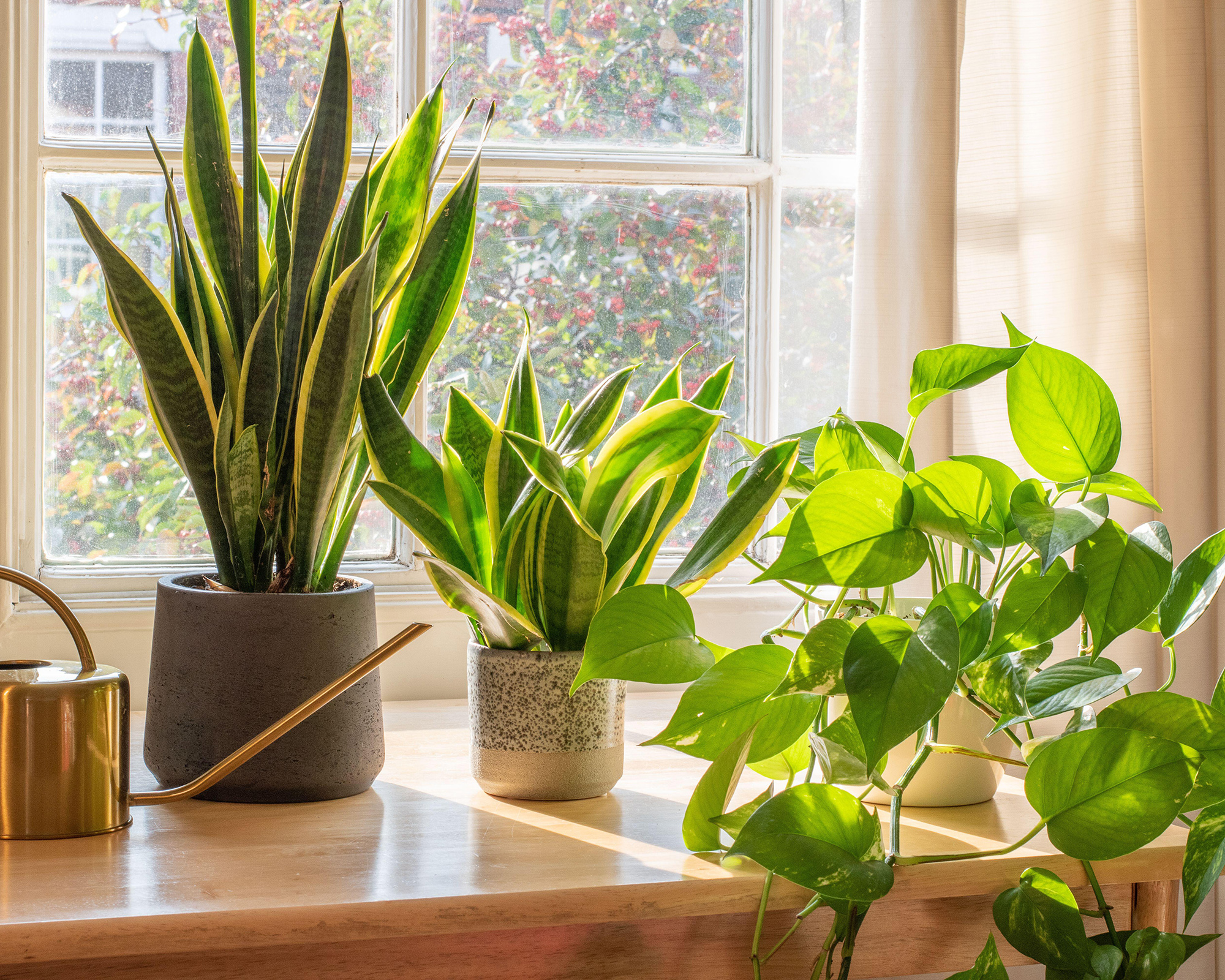
Spiky snake plants and trailing devil's ivy are amidst the best plants for keeping airborne fungal spores and bacteria at bay.
(Paradigm credit: Jonny Forsey / Alamy Stock Photo)
Which plant purifies the air the most?
Although enquiry shows that plants practise non remove large quantities of toxins from the air, a study by Dr Vadoud Niri, Associate Professor at OSWEGA State Academy of New York, and his team establish that the dragon plant (Dracaena) absorbed the virtually acetone from the air, while bromeliads were all-time at neutralising a range of six VOCs.

Studies accept shown that Devil'southward ivy tin reduce levels of benzene in the air
(Image credit: Dinodia Photos / Alamy Stock Photo)
How many plants does it take to purify the air in a room?
Contempo research found that you would demand ten plants or more per square foot (30cm) to remove all the toxic VOCs from a room, which is obviously unrealistic, and every bit yet there is no enquiry into exactly how many houseplants are required to reduce airborne pathogens such as molds to a level where they would do no damage whatsoever.
All the same, all houseplants blot carbon dioxide and release oxygen, and then include as many equally you like in your indoor plant ideas and take these small benefits as a bonus.
Source: https://www.gardeningetc.com/us/advice/air-purifying-plants

0 Response to "Http Www.healthyandnaturalworld.com Best-air-filtering-house-plants"
Postar um comentário